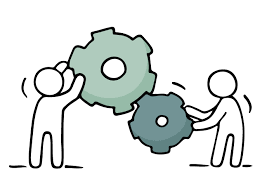Innovation and Sustainable Packaging: Reducing Environmental Footprint 🌱
As a business and entrepreneurship expert, I am always excited to explore new ways to innovate and reduce our environmental footprint. One area where we can make a significant impact is in sustainable packaging. By adopting innovative practices in packaging design and materials, businesses can play a crucial role in conserving resources and protecting the planet. Let's dive into some key points on how innovation can help us achieve sustainable packaging solutions:
1️⃣ Design for the Environment: When developing packaging, businesses should prioritize designs that minimize waste, maximize space efficiency, and are easy to recycle or reuse. Consider the use of biodegradable or compostable materials that have a lower impact on the environment.
2️⃣ Lightweight Packaging: Reducing the weight of packaging materials can result in considerable savings in transportation costs, energy consumption, and greenhouse gas emissions. Look for ways to optimize packaging sizes and use lightweight alternatives without compromising product protection.
3️⃣ Eliminate Single-Use Plastics: Single-use plastics, such as straws, bags, and cutlery, have become a growing concern for environmentalists. Innovate by finding sustainable alternatives like paper straws, reusable bags, and biodegradable cutlery to reduce the environmental impact of your packaging.
4️⃣ Circular Economy Approach: Embrace the principles of a circular economy by designing packaging that can be easily recycled, repurposed, or remanufactured. Encourage customers to return packaging for reuse and explore partnerships with recycling facilities to ensure proper disposal.
5️⃣ Smart Packaging Solutions: Explore innovative technologies like smart labels and indicators that can track the freshness of products to reduce food waste. These solutions help consumers make informed decisions about product consumption and contribute to a more sustainable future.
6️⃣ Minimalist Packaging: Adopt a minimalist approach to packaging design, focusing on simplicity and functionality. Excess packaging not only contributes to waste but also adds unnecessary costs. Consider the example of the popular shoe brand Allbirds, which ships their products in a minimalistic shoebox, reducing waste and impressing eco-conscious consumers.
7️⃣ Biodegradable Materials: Look for opportunities to incorporate biodegradable materials into your packaging. For instance, packaging made from agricultural waste or plant-based materials like cornstarch can offer a sustainable alternative to traditional plastics.
8️⃣ Collaboration and Partnerships: Engage in collaborations and partnerships with other businesses, waste management companies, and recycling facilities to collectively address the challenges of sustainable packaging. By joining forces, we can share knowledge, resources, and drive innovation for a greener future.
9️⃣ Education and Awareness: Educate your customers about the importance of sustainable packaging and how they can contribute to the cause. By raising awareness and providing practical tips, businesses can inspire consumers to make environmentally conscious choices.
🔟 Life Cycle Assessments: Conduct life cycle assessments to evaluate the environmental impact of your packaging from production to disposal. This analysis provides valuable insights to identify areas for improvement and guide innovation efforts.
1️⃣1️⃣ Eco-Friendly Packaging Alternatives: Explore alternative packaging materials like recycled paper, corrugated cardboard, or even mushroom-based packaging. These innovative options are not only eco-friendly but also provide unique branding opportunities.
1️⃣2️⃣ Packaging as a Service: Consider offering packaging as a service, where customers can rent packaging for their needs instead of purchasing and disposing of it. This model promotes a circular economy and reduces waste generated by individual consumers.
1️⃣3️⃣ Consumer-Focused Innovation: Innovate with the consumer in mind. Understand their preferences and demands when it comes to sustainable packaging. By aligning your packaging innovations with consumer needs, you can create a competitive advantage and drive customer loyalty.
1️⃣4️⃣ Transparent Communication: Be transparent about your packaging practices and communicate your sustainability efforts to consumers. This builds trust and allows customers to make informed choices, supporting businesses that prioritize the environment.
1️⃣5️⃣ Continuous Improvement: Remember that sustainable packaging is an ongoing journey. Continuously evaluate and improve your packaging solutions to stay ahead of emerging trends, technologies, and consumer expectations.
In conclusion, embracing innovation in sustainable packaging is not only a responsibility for businesses but also an opportunity for growth and differentiation. By adopting environmentally friendly practices, businesses can reduce their environmental footprint, attract eco-conscious consumers, and contribute to a greener future. What are your thoughts on this important topic? How do you think businesses can further innovate in sustainable packaging?








